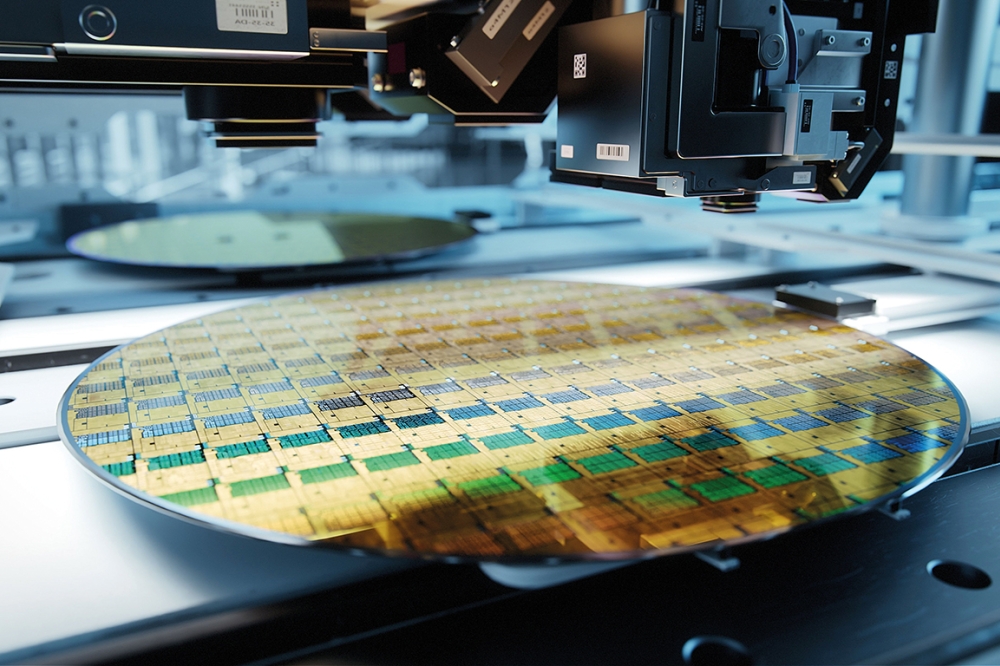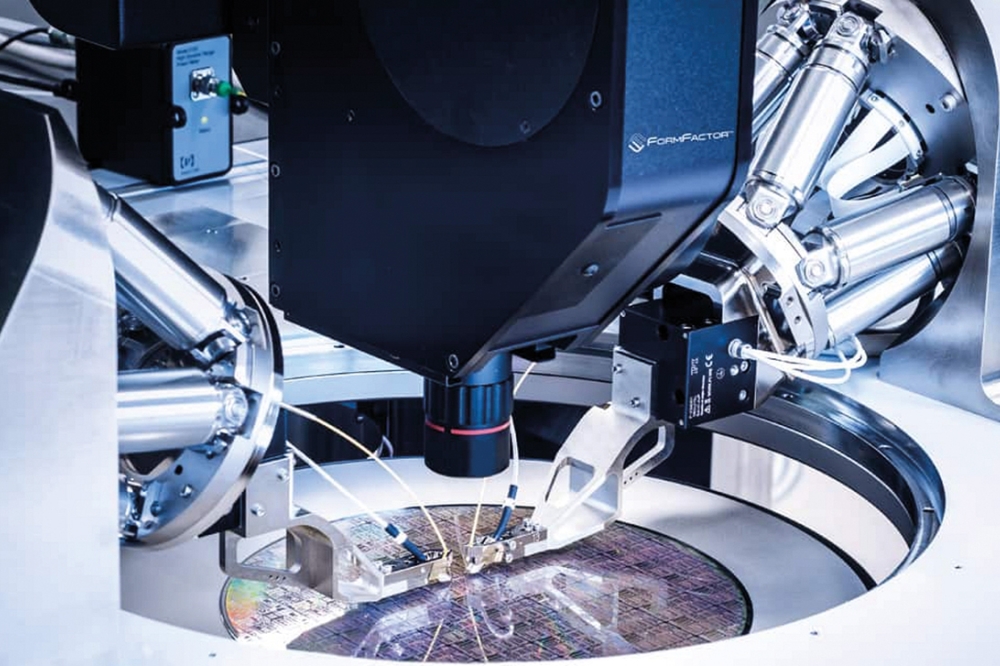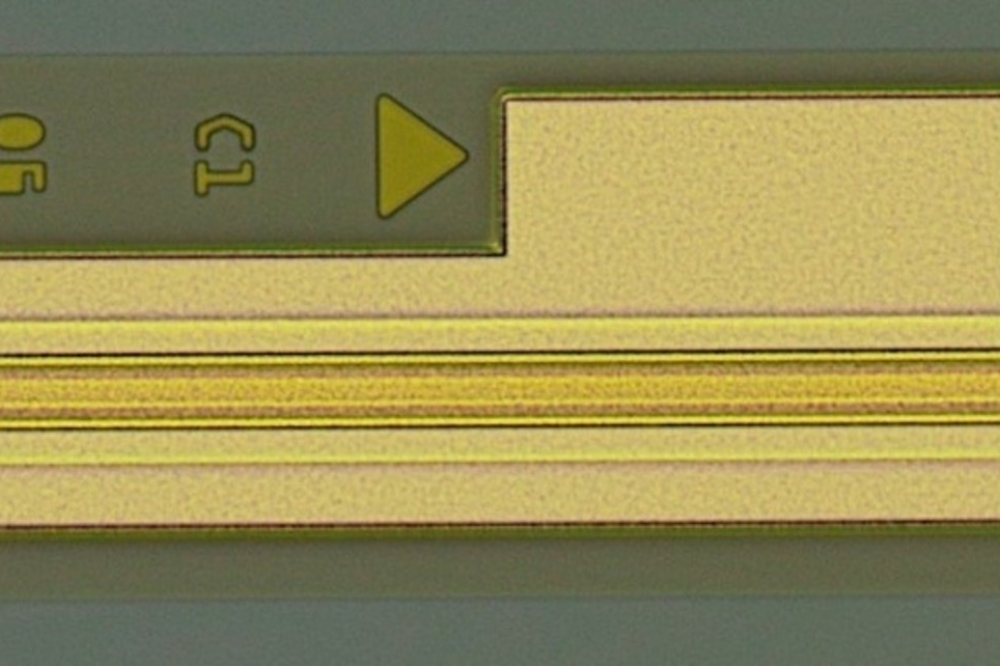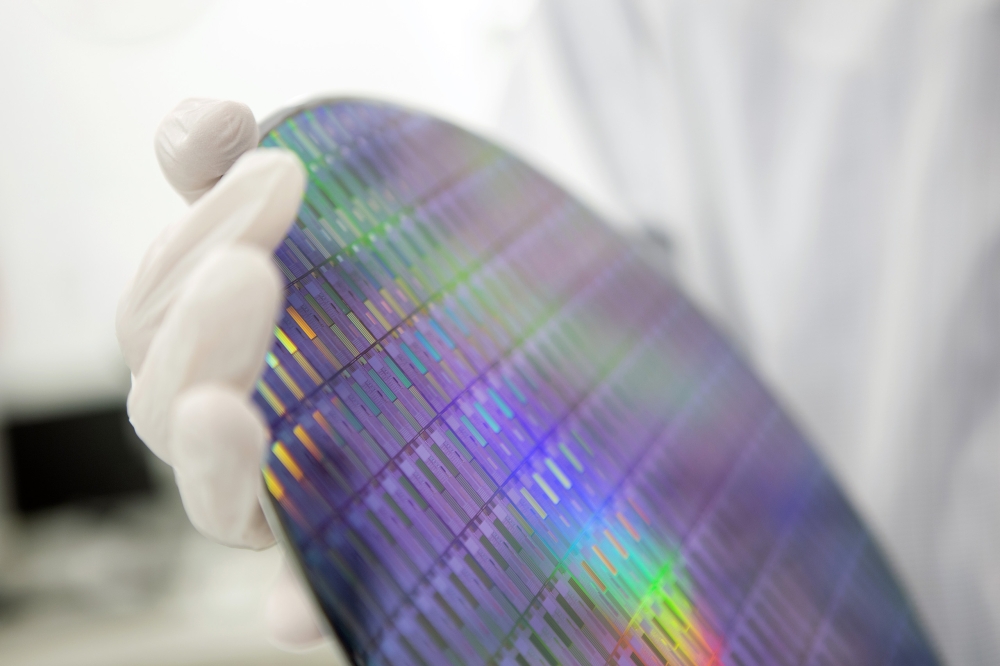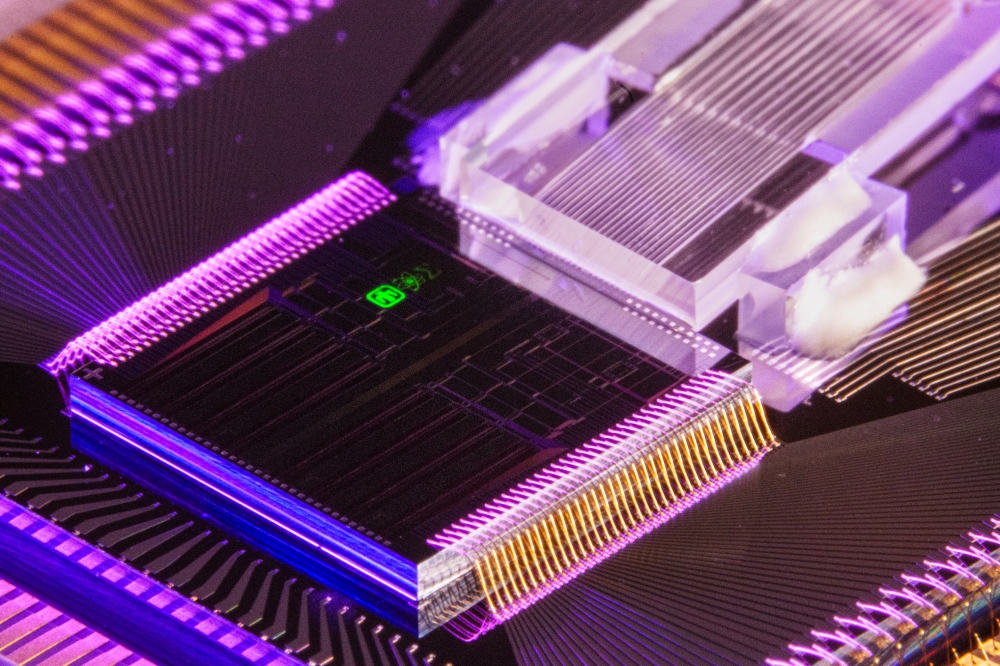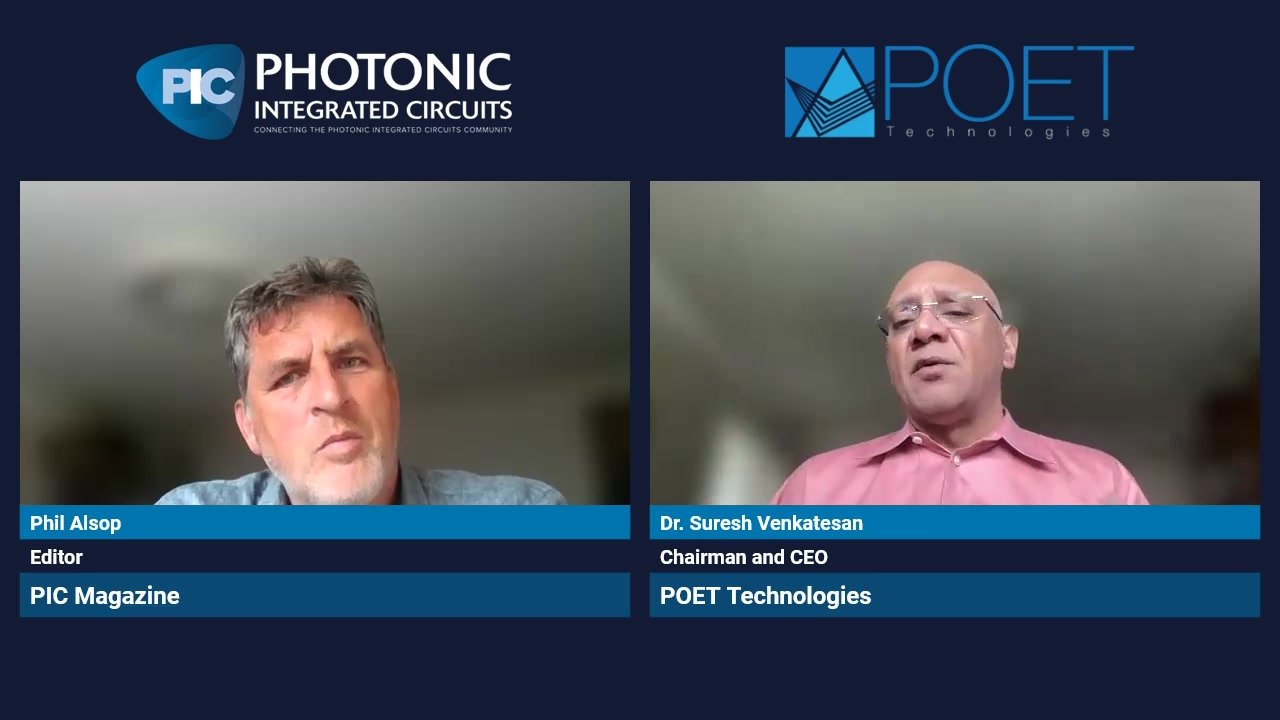News Article
InAlGaAs/InP cylinder microlaser fabricated
The indium aluminium gallium arsenide / indium phosphide microlasers have achieved continuous-wave (CW) electrically injecting single-mode-operation at room temperature.
Chinese researchers have connected InAlGaAs/InP cylinder microlasers with a radius of 15 microns using two 2 micron wide output waveguides which have been fabricated by a novel planar technology process.
Continuous-wave (CW) electrically injected single-mode-operation is realised at room temperature with a side mode suppression of 32 dB.
Electrically injected directional emission microlasers are potential light sources for photonic integrated circuits. Circular microlasers are most commonly used as whispering-gallery mode (WGM) microlasers. However, the total internal reflection of WGM in circular resonators limits the directional emission from the microlasers. Directional emission circular microlasers have previously been investigated by evanescent-wave coupling or directly connecting with an output waveguide.
Optical memory has also been achieved using InP-based microdisk lasers vertically integrated with a silicon-on-insulator (SOI) waveguide, where two sides of the SOI waveguide work as input and output ports. More recently, researchers fabricated a two-port InGaAsP/InP square resonator microlaser; this emitted light from one cleaved port, and a circular microresonator was predicted to realise multiple-port directional emission based on the coupled modes.
Now scientists based at the Chinese Academy of Sciences in Beijing are reporting the fabrication of AlGaInAs/InP cylinder microlasers with radius of 15 mm connected with two 2-mm-wide output waveguides. The microlasers have achieved continuous-wave (CW) electrically injecting single-mode-operation at room temperature.
A common edge-emitting AlGaInAs/InP laser wafer, which consists of six compressively strained quantum wells sandwiched between 100 nm AlGaInAs cladding layers, is used to fabricate the cylinder microlasers. The thicknesses of the quantum wells and barrier layers are 6 and 9 nm, respectively.
The 15-µm-radius AlGaInAs/InP cylinder microlasers with two 2-µm-wide output waveguides are fabricated by firstly, depositing an 800-nm SiO2 layer using plasma-enhanced chemical vapor deposition (PECVD) on the laser wafer as a hard mask for dry etching. Then, the circular resonator patterns with the waveguides are transferred onto the SiO2 layer using standard photolithography and inductively coupled-plasma (ICP) etching techniques, and the laser wafer is etched by about 5.5 μm using ICP technique again with the patterned SiO2 as hard masks. Ti-Au and Au-Ge-Ni are used as p-contact and n-contact metals, respectively, and the etched sidewalls of the microcylinder are surrounded by insulating SiO2 layer and p-contact metals.

Figure 1. Microscope image of a cylinder microlaser with two output waveguides cleaved for testing
Figure 1 shows the microscope image of a cylinder microlaser, where the waveguides of the port-a and port-b are normal and with a crossing angle of 45°to the cleaved facet, respectively, and the lengths of the waveguides are 25 and 38µm.
Output powers coupled into a multimode fibre are measured and plotted as functions of CW injecting current in Fig. 2 at room temperature of 20 °C, where the current kinks at 24mA and 30 mA for port-a and port-b indicate the domination of the stimulated emission in the corresponding waveguide. The extending lines as shown by dashed lines in Fig. 2 have the cross points of 14 and 16 mA at the current axis for the output power from port-a and port-b, respectively.

Figure 2. Output power coupled into optical fibre versus the injection current for the cylinder microlaser measured from the port-a and the port-b.
Considering the cross points are corresponding to the threshold current, we have near values of the threshold currents for the two ports. The output power coupled into an optical fiber is 2.0 and 0.67 µW at the injecting current of 50 mA from port-a and port-b, the total internal reflection on the cleaved facet limits the light emission from the port-b. Furthermore, the output power directly measured by butt-coupling a 5 mm-diameter photodetector is larger than 20 µW.

Figure. 3 Lasing spectra of the cylinder microlaser at the injection current of 45 mA measured from (a) port-a and port-b, and (b) port-a at room temperature. The inset in (b) is measured at 25 mA and 25°C.
The laser output spectra measured from port-a and port-b are plotted in Fig. 3(a) at the injection current of 45 mA. Single mode operation is realised with the lasing wavelength of 1577 nm, and the side mode suppression ratio of 32 dB is obtained from the lasing spectrum of the port-b. Evident minor peaks at 1554.9, 1562.2, 1569.4, and 1584.5 nm are observed in the laser spectrum of the port-a as shown in Fig. 3(b), and the minor peaks are almost invisible in the laser spectrum of the port-b. The mode wavelength intervals of 7.2~7.6 nm are corresponding to the longitudinal mode intervals of the circular microresonator.
What’s more, the detail laser spectra are measured by an optical spectrum analyser with the resolution of 0.067 nm at 25 mA and 25°C and plotted in the inset of Fig. 3(b). The full width at half maximum of 0.087 nm is measured for the resonance peak at 1562.85 nm by fitting a Lorentzian function, and the corresponding mode Q factor of 1.8×104 is obtained as the ratio of the peak wavelength to the full width.
Comparing to the cylinder microlaser with one output waveguide and degenerate lasing modes the researchers found that the cylinder microlasers with two output waveguides are better in realising single transverse mode operation. Some of the high Q confined modes in the microcylinder resonator with one waveguide will experience high coupling loss to the second waveguide as adding another waveguide to the resonator, so less high Q modes exist in the microcylinder with two waveguides.
The physicists expect that a multiple-port cylinder microlaser can be a multiple light sources in photonic integrated circuits with the output waveguides as light modulators, or two waveguides can form a compact Mach-Zehnder modulator.
This work was supported by the National Nature Science Foundation of China under Grants 60723002, 60838003, 61021003, and 61061160502.
Further details of this work will be published in volume 47, issue 16 of Electronics Letters which will be released on 16th August. This work was conducted byJian-Dong Lin, Yong-Zhen Huang, Qi-Feng Yao, Xiao-Meng Lv, Yue-De Yang, Jin-Long Xiao, and Yun Du based at State Key Laboratory on Integrated Optoelectronics, Institute of Semiconductors, Chinese Academy of Sciences, Beijing 100083, China.











